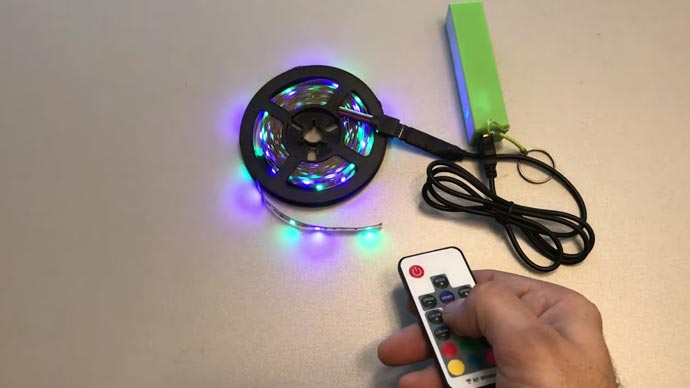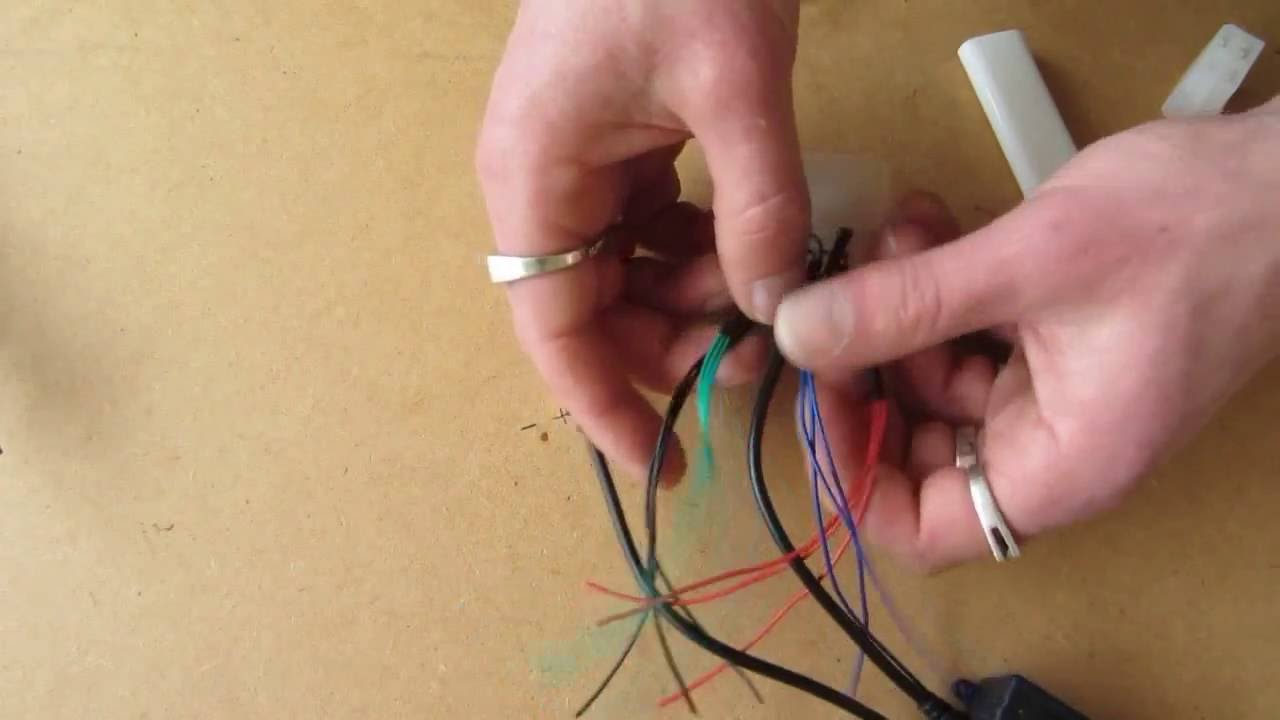LEDs in a car interior lighting system can provide a variety of different effects. You can use them to create a romantic atmosphere or make your vehicle stand out from the crowd with some under-dash LED accent lighting. But before you start shopping for LED strips, it's important to know how to wire them into your car.
Can you have LED strips inside your car?
LED strip lights are a great way to add some personality to your car. You can use them on the inside or outside of your car, and if you choose strips specifically made for car usage, you'll have no problem setting up your lights fast and getting them to last.

Using strip lights in your car has become increasingly popular in recent years. Many drivers enjoy the unique look that they can create with LED accent lighting. LEDs are also much more energy-efficient than traditional incandescent bulbs, so they won't put a strain on your car's electrical system.
Many mechanics believe that strip lights can actually improve safety on the road. The extra light can make it easier to see what's going on inside your car, which can be helpful if you're ever in an accident.
How to wire 12V LED strip lights in car?
One of the most difficult parts of wiring 12V LED strip lights in a car is finding a good spot to tap into the electrical system. Most cars have multiple 12V power ports, but they're often located in difficult-to-reach places. The best place to tap into the electrical system is usually at the fuse box.
To wire 12V LED strip lights in a car, start by running the positive wire from the LED light strips to the fuse box. Then, use a wire connector to splice the positive wire to one of the existing wires in the fuse box. Next, run the negative wire from the LED light strips to a ground point on the car. Finally, use another wire connector to splice the negative wire to an existing ground wire in the car. When splicing the wires, be sure to use wire connectors that are rated for the amperage of the LED light strips.
To begin wiring the 12V LED strip to the battery, make sure the battery's power button is pressed and that 12V output is selected. Simply connect one end of the DC cable to the battery's DC output port labeled "DC output." Then, insert the other end into the barrel jack connection of the LED strip.
Can you wire LED light bar directly to battery?
Most likely, you'll connect the power lead of your LED light bar relay to the battery straight, but you won't necessarily use the same battery's negative terminal for the ground. As long as there is a clear connection between your circuit and bare metal, you can ground your wiring to the vehicle's frame.
Besides, light bars that operate on DC power often have an inline fuse that's placed between the battery and the light bar itself. The purpose of this fuse is to protect your electrical system in case of a short circuit. When shopping for an LED light bar, it's important to check the specifications to see if the light bar is rated for use with a 12V or 24V electrical system. Most cars have a 12V electrical system, but some trucks and other vehicles have a 24V system. If you try to wire a 24V light bar to a 12V system, it will likely burn out the LEDs.
If you're looking to wire your LED strips so that they receive power, you can do so by using either wire nuts or connecting the positive and negative wires to the same ones. This will create a one-to-one connection. However, before doing any of this, make sure to measure and cut the LED strip according to how much you need! Moreover, you need to take into account the amperage of your LED light strip. Most 12-volt LED strips are rated for 2 amps maximum. That means that you can wire multiple strips in parallel, as long as the total current draw does not exceed 2 amps.
For example, let's say you have a 5-meter LED strip that draws 1 amp. If you wanted to wire another 5-meter strip in parallel, that would be fine since the total current draw would still be under 2 amps. However, if you wanted to wire a third 5-meter strip, that would put you over the limit since the total current draw would then be 3 amps.
To sum it up, yes, you can direct wire LED strips, but make sure to take into account the amperage of the strips and wire them accordingly!

How long will a car battery power a LED strip?
The strips would draw 0.8A at 12V and 9.6W, or 8%. Divide the current by the battery capacity: 6 hours / 0.8A = 12 hours. This means that a 100 Ah battery will power the lights for 12 hours. If you have a 50 Ah battery, it will power the lights for 6 hours, and so on. This is assuming that the battery is in good condition and properly sized for the car. A lower-capacity battery or one that is not in good condition may not last as long.
Keep in mind that other accessories in your car, such as the radio or headlights, will also be drawing power from the battery. This will reduce the amount of time that the LED strip lights can stay on. It's also important to note that the battery will discharge faster in cold weather. So if you're using your LED strip lights in a cold climate, they may not last as long as they would in a warmer climate.
With a little bit of planning, you can wire 12V LED strip lights in your car to create any look you want. Just be sure to follow the instructions carefully and use the proper wire connectors. With a little bit of practice, you'll be an expert in no time!
Do LED strip lights drain car battery?
The long answer is no, they do not. LED bulbs are actually more efficient than traditional incandescent bulbs, so they use less energy and don't deplete your battery as quickly. Besides, most cars have multiple 12V power ports, so you can easily tap into the electrical system and wire the LED strips directly to the battery.
But what affects the battery lifespan? In the case of the lighting system, it is the amperage that matters the most. The rule of thumb is: the lower the amperage, the longer the lifespan of your battery. So, if you're looking to save money and extend the life of your car's battery, make sure to choose LED light strips with a low amperage rating.
How do you control a 12V LED strip?
You can use a 12V LED controller to control the strip lights. The controller will have a power input and output, as well as an on/off switch. Some controllers also have built-in dimming functionality. To wire the controller, simply connect the positive and negative wires from the controller to the positive and negative wires of the LED strip.
Once the controller is wired, you can plug it into a 12V power source and turn it on. Then, use the switch to turn the LED strip lights on and off, or dim them up and down if your controller has that feature.
With a 12V LED controller, you can easily control your LED strip lights without having to worry about wiring them directly to the power source. That way, you can create any look you want without having to worry about overloading the circuit or depleting your car's battery.

Do LED strips need a relay?
Relays are essential for making LED lights work. Without a relay, the light will not be as bright. This is why it is important to use a relay when you are making an LED light. Usually, the relay works in such a way that it helps the light to be turned on and off. When you are using an LED light, it is necessary to have a way to dim the light. Relays do this job by helping the light to be dimmed. In other words, relays are used in order to make the LED lights work better.
As a driver, you should be aware of how relays work. If you are not, then you might want to learn about them. This way, you will be able to install LED strips in your car without any problems. Just like anything else, there are certain things that you need to know about LED strips before you can use them. In this article, we have covered some of the basics that you need to know about LED strips. We hope that this article has been helpful and that you now know more about LED strips than you did before!
What happens if you wire LED strip backwards?
Remember that polarity is important for LEDs. If you wire the strip backward, it won't turn on. However, this won't damage the LEDS - just reverse the wires and it should light up. Sometimes when the strip is attached backward and you turn on the power, the LEDs will very briefly flash. This is called "ghosting" and is caused by a small amount of current flowing through the diode in the wrong direction.
If you're not sure which wire is positive and which is negative, there's a simple way to test it. Touch the two wires to a battery - if the LED lights up, then you've got it right. If not, just switch the wires around and try again. Besides, it's always better to err on the side of caution when working with electricity!
The polarity in LED strips is usually indicated by a plus (+) or minus (-) sign next to the corresponding wire. However, it's always a good idea to test it before applying power. When wiring LED strip lights in your car, make sure to connect the ground (negative) wire to a metal surface for proper grounding. Otherwise, you may experience electrical issues. Also, be careful not to overload your car's electrical system by adding too many LEDs. Try to keep the number of LEDs under 50 per side - more than that may cause problems.
Finally, always use high-quality materials when installing LED strips in your car. Cheap wires and connectors can cause all sorts of problems down the road. So it's worth spending a few extra dollars on quality parts from the beginning.
What is the substitute for 12V LED strip lights in car?

Sometimes when motorists don`t want to draw too much attention to their cars, they`ll look for ways to wire their 12V LED strip lights in a way that is not so obvious. While this may be difficult to do depending on the make and model of the car, it is still possible to find a way to inconspicuously wire your LED lights. Here are a few tips on how you can achieve this:
- If your car has an aftermarket sunroof, you can use the sunroof tracks as a discreet way to run the wires for your LED strip lights. You can tuck the wires into the sunroof tracks and then close the sunroof, which will hold the wires in place.
- Another option is to use zip ties to secure the LED strip light wires to existing wire looms in your car. This is a good option if you don`t want to drill any new holes in your car.
- If you`re really not keen on running any new wires, you can always opt for wireless LED strip lights. These lights are battery-operated and can be placed just about anywhere in your car. However, they may not be as bright as wired LED strip lights.
- Finally, if you`re really set on having wired LED strip lights, you can always run the wires through the car`s existing weather-stripping. This may take some time and patience, but it will ultimately give you a clean and hidden installation.